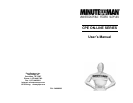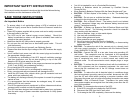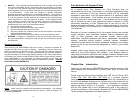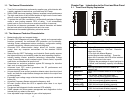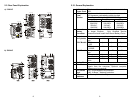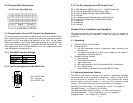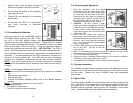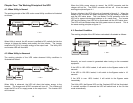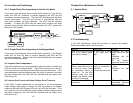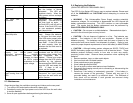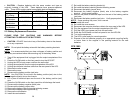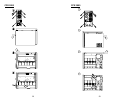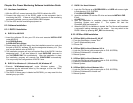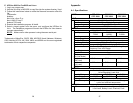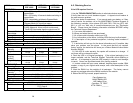
12
1. Keep at least 20cm (8-inches) clearance
from the rear panel of the UPS to the wall.
2. Do not block the airflow to the ventilation
openings of the unit.
3. These UPSs are intended for a Controlled
Environment.
4. Do not place the UPS in an environment
near dusty, corrosive or flammable
materials.
3.3. Connecting the Batteries
Be sure to read all of the WARNINGS and the
CAUTIONS before installing the UPS. Place
the UPS in the final desired location and
complete the rest of the installation procedure. These UPSs are shipped
with the internal batteries disconnected. The batteries must be connected
before putting these UPSs into service. Follow the procedure below to
connect the batteries and install the UPS. USE CAUTION: The UPS is
heavy. Use the appropriate number of personnel when installing the UPS.
The installation should be conducted or supervised by a Qualified Service
Personnel. It is recommended that the UPS's batteries be charged for a
minimum of 4-hours before use. The UPS may be used immediately,
however, the “On-Battery” runtime may be less than normally expected.
NOTE:
If the UPS is going to be out of service or stored for a prolonged
period of time, the batteries must be recharged for at least 24-hours every 2-
3 months.
NOTE:
See the Battery Replacement Procedure.
1. Remove the UPS from the shipping box and set on the floor or a bench
top.
2. Remove the cover screws.
3. Remove the cover.
4. Connect the Battery Negative (Black) wire to the Battery Negative
terminal.
NOTE:
Some sparking might occur, this is normal.
5. Re-install the cover.
6. Re-install the cover screws.
7. The UPS is ready for normal operation.
13
3.4. Connecting the Equipment
1. Plug the equipment into the output
receptacles on the rear panel of the UPS.
Do not use extension cords, adapter plugs
or surge strips on the output of the UPS.
Ensure that the load does not exceed the
maximum output rating of the UPS (refer to
the information label on the UPS or the
Electrical Specifications in this manual).
• CAUTION – DO NOT connect a laser
printer to the output receptacles on the UPS,
unless the UPS is rated 2000VA or greater.
A laser printer draws significantly more
power when printing than at idle and may
overload the UPS.
2. Verify that the voltage and frequency
ratings match that of the Utility power, and
then connect the AC Input power cord into a
two-pole, three -wire grounded receptacle
only. Do not use extension cords, adapter
plugs, or surge strips.
3. Press the Main switch on the front panel to
turn on the UPS. The fan on the rear
panel will start.
4. After 7~10 seconds, the start-up of UPS will be completed, then the "Utility"
LED and Inverter" LED will illuminate simultaneously.
5. Turn on the connected equipment.
6. Press and hold the Test/Alarm Silencer Button for 10-seconds to perform a
Self-Test to verify proper operation of the UPS.
7. The installation is complete the UPS is ready for normal operation.
3.5. Storage Instruction
For extended storage through moderate climate, the batteries should be
charged for 24-hours every 3-months by plugging the UPS power cord into
the wall outlet. Repeat this every 2-months under high temperature
environment.
3.6. Option Slot
You may install the SNMP card into the Option slot on the rear panel of the
UPS. The UPS may be connected to the network management system via
the SNMP card. The SNMP card is an optional feature of the UPS.
Qualified Service Personnel should perform the installation of the option
cards. See the SNMP card User’s Manual for the installation.



